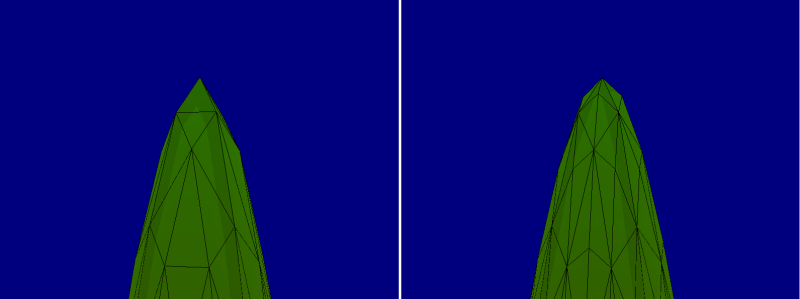Introduction
Title: Generating and rendering displacement maps with Adaptive Tessellation
Members:
Rohit Garg (05D26003)
Sriram Kashyap (08305028)
Displacement mapping is a technique using a texture (procedural or otherwise) as a height-map to cause an effect where the actual geometric position of points over the textured surface are displaced according to the value the texture function evaluates to at each point on the surface. It gives surfaces a sense of depth and detail, permitting self-occlusion, self-shadowing and silhouettes.
As it is an expensive technique owing to the large amount of additional geometry, displacement mapping has been restricted to high-end rendering systems. Real-time APIs like OpenGL, lacked this ability. One of the reasons for this absence is that the implementation of displacement mapping requires an adaptive tessellation of the surface.
Members:
Rohit Garg (05D26003)
Sriram Kashyap (08305028)
Displacement mapping is a technique using a texture (procedural or otherwise) as a height-map to cause an effect where the actual geometric position of points over the textured surface are displaced according to the value the texture function evaluates to at each point on the surface. It gives surfaces a sense of depth and detail, permitting self-occlusion, self-shadowing and silhouettes.
As it is an expensive technique owing to the large amount of additional geometry, displacement mapping has been restricted to high-end rendering systems. Real-time APIs like OpenGL, lacked this ability. One of the reasons for this absence is that the implementation of displacement mapping requires an adaptive tessellation of the surface.

